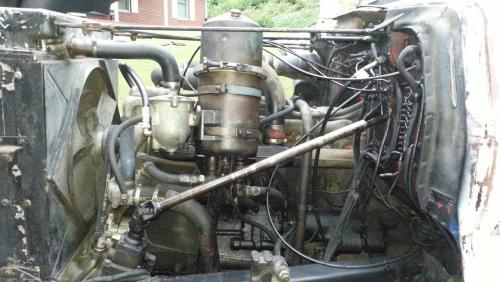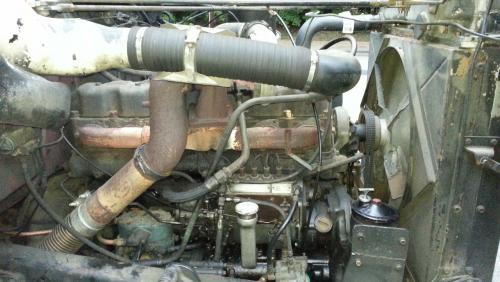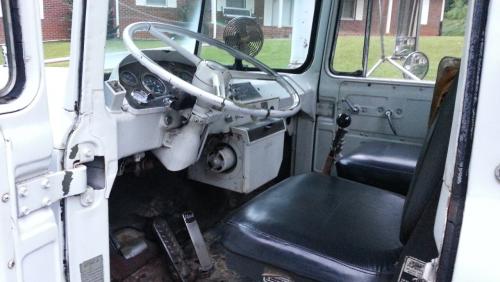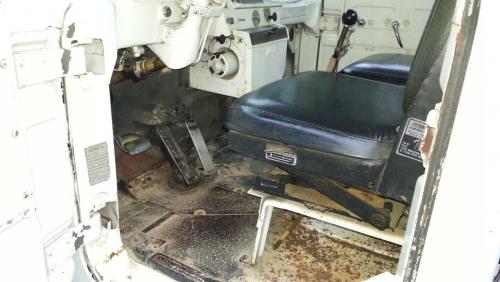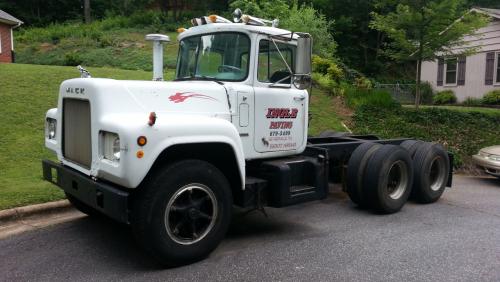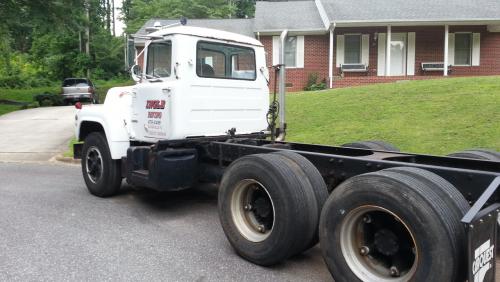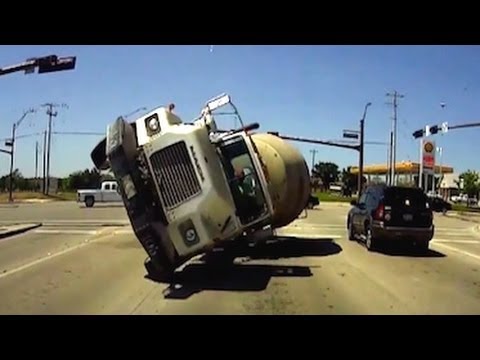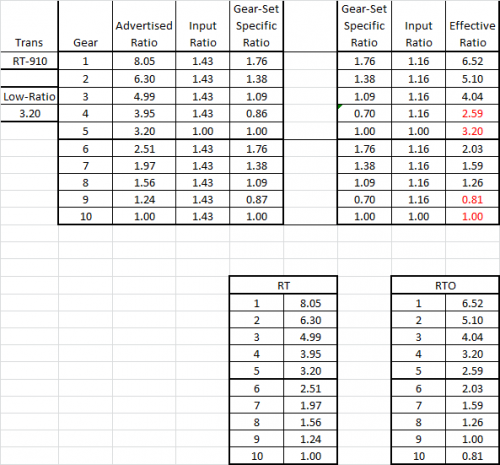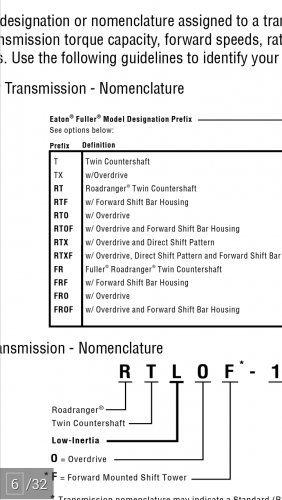-
Posts
2,624 -
Joined
-
Last visited
-
Days Won
37
Content Type
Profiles
Forums
Gallery
Events
Blogs
BMT Wiki
Collections
Store
Everything posted by doubleclutchinweasel
-
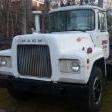
SOLD 1970 R600 For Sale ***SOLD!***
doubleclutchinweasel replied to doubleclutchinweasel's topic in Trucks for Sale
It's not that I just want rid of this particular truck. I only have the one, & it's a hobby. If I sell it, I probably won't get another one. May be time to move on to another hobby. We'll see if it is meant to be or not! If it sells, it is meant to. If it doesn't, it isn't. I have ordered new wheel studs, clamps, and nuts for the front wheels. If anybody buys it, they get the benefit. If they don't, I do! -

SOLD 1970 R600 For Sale ***SOLD!***
doubleclutchinweasel replied to doubleclutchinweasel's topic in Trucks for Sale
If they don't cough up the dough, I'll keep it! -

SOLD 1970 R600 For Sale ***SOLD!***
doubleclutchinweasel replied to doubleclutchinweasel's topic in Trucks for Sale
'Fraid not... -

SOLD 1970 R600 For Sale ***SOLD!***
doubleclutchinweasel replied to doubleclutchinweasel's topic in Trucks for Sale
P.M. sent... -

SOLD 1970 R600 For Sale ***SOLD!***
doubleclutchinweasel replied to doubleclutchinweasel's topic in Trucks for Sale
Yep. You can skip a few if you're feeling lazy, or grab 'em all if you're feeling cocky. -

SOLD 1970 R600 For Sale ***SOLD!***
doubleclutchinweasel replied to doubleclutchinweasel's topic in Trucks for Sale
-

SOLD 1970 R600 For Sale ***SOLD!***
doubleclutchinweasel replied to doubleclutchinweasel's topic in Trucks for Sale
Can get all the pics you want. No A/C. Check back shortly. -
SOLD!!! Guys, I think I've had enough. I'm not having fun any more. So, I think the R600 is going on the block. I hate to let it go, but I think it is the right thing to do. Asking $7,000, but might do a little better for one of you guys with "no-kill" shelters. This is NOT a barely-running-pulled-out-of-the-weeds-and-shot-with-paint-export-special. The truck is driven almost every day. It starts instantly, works extremely well, and drives great. Everything works (except maybe the heater...water is turned off at the manifold). Every light on it works. Have clean NC title, which is a feat all its own. Also have the build sheet. ENDT-673C (250 hp) with factory Fuller RTF-915. Dual-disc spicer pull clutch. 4.17 rears. Inverted camelback rear springs. Also includes 16 extra Dayton rims with varying types & conditions of tires on them. When I got it, it already had hydraulic power steering added (TRW/Ross), and has a 1-wire alternator (negative ground). Also, brake linings were fresh, and are still in great shape. I have done: new rear slack adjusters new rear brake actuators converted from DD3 to spring brakes all new rubber air hoses from frame to axles all old frame-mounted air hoses replaced with DOT poly new parking brake valve (with built-in anti-compounding) new trailer brake valve new limiting Q/R valve for front axle new brake light air pressure switch new radiator hoses new fan belts new water filter supply hose new RoadRanger range shift synchro kit new range shift valve new transmission air lines replaced 3 spring leaves in LF (2 broken ones and the next one) new kingpins & bushings 8 "newer" recap tires & better tubeless rims (rears) new bulldog & base (easier to open hood!) new fuel filters rebuilt fuel primer pump new air intake hose new tail lights new front fender marker lights 1 new battery (all it's ever needed!) new negative ground volt meter new exhaust s-pipe new exhaust stack new wiring to tail lights new wiring to brake light switch new tie rod new tie rod ends new mudflap brackets & flaps removed worn-out 5th wheel and cobbled-up mount removed wires that went nowhere new wiper blades new tachometer and drive cable New cab mounts fresh oil change have radiator mounts in box have front spring isolators in box
-
Spent a summer in Missouri once. Cleared a 30-mile-long power line. Learned a whole new definition of the words "hot" & "dry"!
-
I'm right there with you! They say the first thing to go is your memory. The second thing is...uh...the second thing is...uh...what were we talking about again?
-
When in 5th gear, the output shaft is connected directly to the input shaft. So, no, 5th gear does not use the countershaft. This is your direct gear.
-

What to do with STUCK B model shutters
doubleclutchinweasel replied to j hancock's topic in Odds and Ends
I don't know...the original post is from New Hampshire... -
The only way I have been able to put a screenshot on here is to save it as a .jpg and load it like a picture...like you show. Wouldn't it be nice if one could cut from elsewhere and paste in here? I can cut & paste from within the forum, but not from outside! Browser mis-match, perhaps?
-
So, my picture isn't where it should be?
-
??????
-
Okay... The gear sets in question, for the input set and 4th gear set of the RT/RTO-910/915 are as follows.... RT - Input Set - 28 Driver / 40 Driven RT - 4th Gear Set - 37 Driver / 32 Driven RTO - Input Set - 32 Driver / 37 Driven RTO - 4th Gear Set - 40 Driver / 28 Driven These are based on the part numbers in the Eaton-Fuller parts manual. So, these ARE the exact same gear sets (tooth/tooth). They ARE also different part numbers in some cases. Not sure why...maybe hub shapes or something. If you plug in these numbers, and calculate the remaining variables (remaining gear ratios, low-gear ratio, etc...), and then substitute the known numbers, you get the gear ratios shown below. Now, this only applies to this particular series! I have no idea what might be in a different model, or a different revision. Use (or not) at your own risk!
-
Found some numbers! Working on it now.
-
Yes! Yes it is! In fact, there is one gear which is common between the RT and RTO, within the 2 gear sets we are talking about. gear 14303 is the input/driven gear on the RT and it is 4th gear driver on the RTO. Now, what that means is that the mating gears (14486 and 16002, respectively) MUST also have the same tooth count. If they didn't they wouldn't mesh! Soooooooooo, there are only a few gear part numbers to be identified. And, yes, the input "set" on the RTO and that of the RT could still be different, which could cause a different effective input ratio. This would have an effect on every gear, except the direct, which could cause a different step percentage between 3-4 and 4-5...like we said above. The 1-2 and 2-3 steps would, however, be unaffected. As soon as we can get some tooth counts, I think we can quantify the effects of making a do-it-yourself RTO. And, I'd really like to know the numbers, since I have been tempted to do mine!
-
I have some part numbers. But, I have no descriptions (i.e.: tooth counts). Direct Drive (RT-910, -915) Input Drive Gear - 14486 Countershaft Driven Gear - 14303 Countershaft 4th Gear - 14299 Mainshaft 4th Gear - 14487 Overdrive (RTO-910, -915) Input Drive Gear - 16601 Countershaft Driven Gear - 16003 Countershaft 4th Gear - 14303 Mainshaft 4th Gear - 16002 If anybody has the tooth counts on these, and knowing what the 1-2-3 ratios are, I think we can accurately chart the effective gear ratios of a home-made RTO. All the rest of the gears appear to be the same. Any info?
-
You're all over it! We're currently trying to figure out exactly what the gear ratios would be after doing that. I hope I can find the tooth count in a direct & see what the resulting ratios would be in the homemade od box.Incidentally, you are exactly right. We should always assume a new guy is reading this. That's why I'm frequently guilty of providing more than just a short answer.
-
I'm not saying that swapping the front gears with the 4th gears is necessarily the same thing as getting a "real" overdrive box. All I'm saying is that, by swapping those gears, you are speeding up the countershafts, effectively raising every gear ratio about 20%. The steps in-between gears will not change, as they are determined by the ratio of teeth on each gear set. Of course, if any steps ARE affected, it would be one step to either side of "direct"...and that COULD be a real nuisance! If someone will get me the number of teeth on all the gears in a standard RT-910 or -915, I'll be more than happy to calculate the ACTUAL gear ratios achieved by doing the gear-set swap. Or, would the number of teeth be in the parts book? I'll look and see if I may already have those numbers. Incidentally, this is fun!
-
-
Sorry... the "T" is for "twin countershaft". Stepped out for a moment there...
BigMackTrucks.com
BigMackTrucks.com is a support forum for antique, classic and modern Mack Trucks! The forum is owned and maintained by Watt's Truck Center, Inc. an independent, full service Mack dealer. The forums are not affiliated with Mack Trucks, Inc.
Our Vendors and Advertisers
Thank you for your support!




